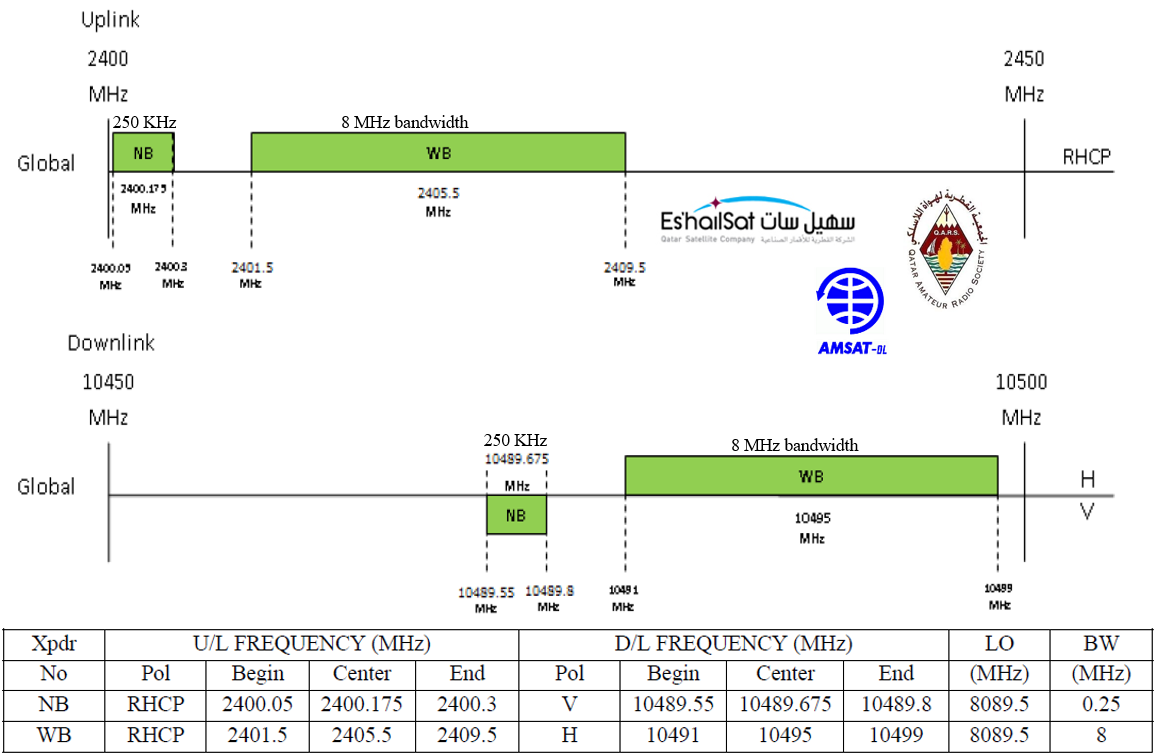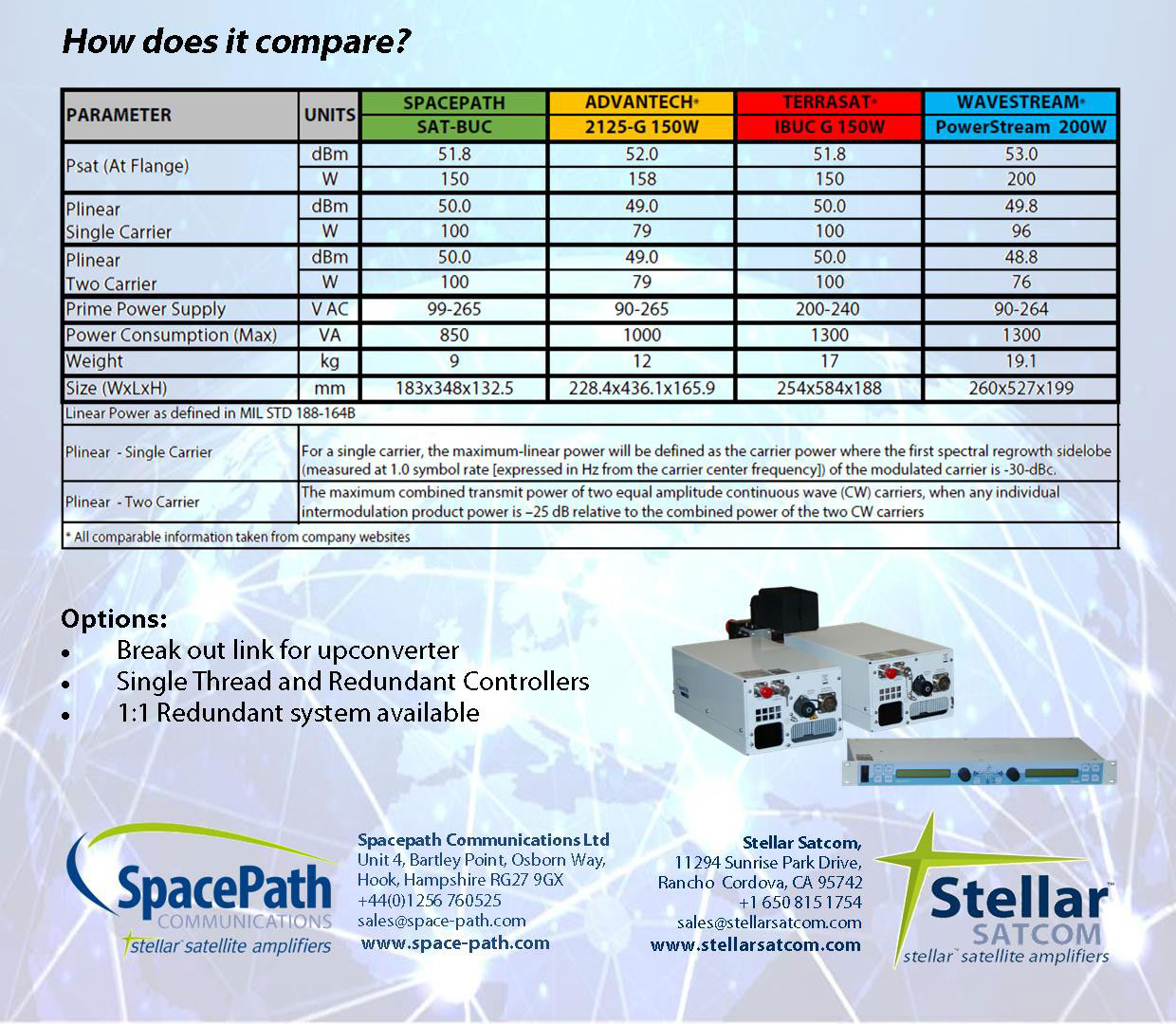

- #Ku band uplink downlink frequency full
- #Ku band uplink downlink frequency tv
- #Ku band uplink downlink frequency download
Chances are your most important customers are ambivalent at best. Ku-Band options simply can’t deliver comparable levels of service and performance.Īll the advantages of a Ka-Band solution are complemented by affordable and flexible airtime service plans that can be tailored to the specific needs of your operation and the unique Honeywell Forge Cabin Connectivity suite of services and applications that help you make the most of your connected aircraft investment.įor now, debate continues on the relative merits of Ku-Band and Ka-Band solutions. In short, passengers can access anything available on the internet, in real-time, wherever they fly.
#Ku band uplink downlink frequency tv
When it’s time to kick back, our solution lets passengers FaceTime with the family, live-stream the latest blockbuster or watch the big game or that must-see TV show live – just like they were in their own living room. Speaking of video, only JetWave and JetConneX have the bandwidth they need to join that critical video conference or connect with their most important customers in real time.
#Ku band uplink downlink frequency download
Our signature speed and reliability enable your passengers to not only send and receive basic emails, but to download and upload huge files, like presentations with lots of graphics and even embedded video.
#Ku band uplink downlink frequency full
You can send an email or check stock quotes with either technology, but when it comes to exploring and exploiting the full potential of our 21st Century connected world, the Ka-Band solution stands head and shoulders above the Ku-Band’s capabilities. With our JetWave satellite communications hardware and the Jet ConneX service, busy executives can reliably connect to the Internet from wheels-up to wheels-down and stay connected wherever they fly, even on international and transoceanic trips. But the real difference lies in a superior customer experience that will delight business-jet passengers, especially those who’ve lived through the frustrations of slow and unreliable in-flight Wi-Fi service. The technical details obviously set the Honeywell-Inmarsat Ka-Band solution apart from even the best Ku-Band options. With the addition of three more satellites, the first of which will launch in 2019, Jet ConneX will provide even greater bandwidth and additional coverage for the busiest regions of the world.

With Honeywell’s JetWave satellite communications system, which connects to the Inmarsat Jet ConneX satellite communications service, we can achieve speeds of up to 33 mbps, exceeding the speed of many ground-based Wi-Fi services, and with network availability numbers above 95 percent.Įach satellite in the Inmarsat 5 constellation operates 89 highly efficient Ka-Band spot beams, giving the network reliable global coverage, except at the poles. Performance of Ku-Band systems has improved in recent years with typical speeds now around 18 mbps.

The best equipped operate on the Ku-band and probably connect with top speeds in the 3-4 mbps range – too slow to satisfy most discriminating business aviation passengers. Even aircraft that rolled off the assembly line early in this decade are often equipped with only air-to-ground systems or low-speed voice and data capabilities. Given passenger expectations, most aircraft flying today are probably ready for a connectivity upgrade. A solution that might be fine for a twin-turbine that flies a few hundred miles isn’t going to cut it for a heavy-iron business jet that makes frequent flights overseas with the CEO onboard. The best option depends largely on the aircraft, its size and mission. The choice is best left up to the technical experts and frankly most owners and operators rely happily on their flight operations department to make the call. While other satellite communications options like the L-Band and Swiftbroadband are still widely used in general aviation, the choice for high-speed in-flight Wi-Fi capabilities boils down to either an older, more established Ku-Band system or the newer, faster Ka-Band solution. And woe to the aircraft operator who can’t provide it. Whether traveling for business or pleasure, your passengers want – no, expect – the same user experience at 35,000 feet that they enjoy on the ground, in their home or office. If you need proof, just watch the eyes glaze over when we start to explain wavelengths to a business jet traveler who wants nothing more than in-flight Wi-Fi that is fast, reliable and available anywhere in the world. There’s a running debate within the small community of satellite communications providers about the merits of the Ka and Ku frequency bands.


 0 kommentar(er)
0 kommentar(er)
